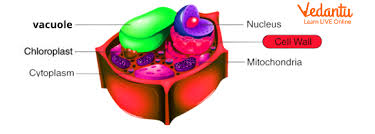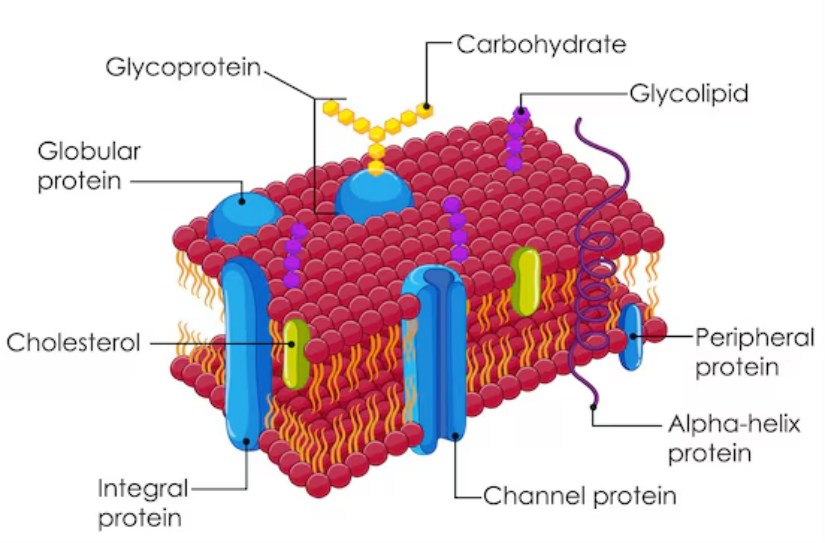How Do Cell Walls and Cell Membranes Support Life?
Cells are the fundamental units of life, often described as the building blocks of organisms. Dating back to Robert Hooke’s discovery in 1665, cells come in various shapes and sizes depending on their functions and compositions. In this guide, we will explore the roles of the cell wall and cell membrane, discuss the difference between cell wall and cell membrane, and explain why each is important for the life of a cell.
What is a Cell Wall?

The cell wall is a rigid, outer covering found in plant cells, fungi, some bacteria, and algae. It lies outside the cell membrane and is crucial in providing structural support. Here are the key points:
Composition: In plant cells, the cell wall is primarily made of cellulose, along with components such as hemicellulose, lignin, and pectin. In fungi, chitin is a major component, while bacteria have peptidoglycan.
Functions:
Protection: Safeguards the cell against physical damage and pathogens.
Support: Maintains the shape and structural integrity of the cell.
Growth Regulation: Controls the direction and extent of cell growth.
Storage: Acts as a storage area for carbohydrates, particularly in seeds.
Permeability: Allows the free passage of small molecules.
Unlike the cell membrane, the cell wall not only provides mechanical strength but also plays a role in intercellular communication by transmitting signals that can influence growth and development. This aspect is particularly vital during plant responses to environmental stress.
Also, read Plant Cell
What is a Cell Membrane?

The cell membrane (or plasma membrane) is a thin, semi-permeable barrier found in all cells, including those of plants, animals, bacteria, and fungi. It is essential for maintaining the internal environment of the cell. Key features include:
Composition: The cell membrane is primarily a lipid bilayer interspersed with proteins and carbohydrates.
Functions:
Selective Permeability: Regulates the movement of substances into and out of the cell, ensuring only selected molecules pass through.
Protection: Acts as a barrier protecting the cell’s internal components.
Communication and Signalling: Contains receptors that help in cell-to-cell communication.
Support and Structure: Maintains the cell’s shape and aids in processes such as cell division.
Metabolic Activity: Unlike the cell wall, the cell membrane is metabolically active and adapts to changes in the cell’s environment.
The function of cell membranes is central to maintaining homeostasis, and understanding the importance of cell membranes is crucial in biology.
Also, read Cell membrane
Difference Between Cell Wall and Cell Membrane
It is common to ask, "is cell wall and cell membrane the same?" The answer is no. They are distinct structures with unique roles:
Understanding the difference between cell wall and cell membrane is vital for recognising how cells maintain structure and regulate internal processes.
Explore more: Difference between Plant Cell and Animal Cell
Real-World Applications
The study of cell walls and cell membranes is not just academic—it has many practical applications:
Medicine and Pharmacology: Knowledge of the function of cell membrane is crucial in drug delivery systems, where targeting cell receptors improves therapeutic outcomes.
Agriculture: Understanding cell walls helps in developing crops that are more resistant to pests and environmental stresses.
Biotechnology: Engineers use cell membrane properties in the design of biosensors and in the development of artificial cells.
Food Industry: The manipulation of cell wall components can improve food texture and shelf life.
These applications highlight the importance of cell membrane and the role of the cell wall in various industries, making this topic highly relevant in real-life scenarios.
Fun Facts about Cell Walls and Cell Membranes
Historical Insight: The term "cell" was coined by Robert Hooke in 1665 after observing the tiny compartments in cork, which resembled the small rooms of a monastery.
Adaptive Structures: Some bacteria can alter their cell wall composition to resist antibiotics, showcasing nature’s ingenuity.
Dynamic Membranes: Despite its thin structure, the cell membrane is incredibly dynamic, continuously changing its composition in response to environmental signals.
Key Points
Intercellular Communication: Recent studies reveal that the cell wall is not merely a passive barrier but can actively participate in cell signalling, impacting how cells react to their surroundings.
Membrane Fluidity: The fluid nature of the cell membrane allows cells to merge with one another during processes such as fertilisation and immune responses.
Evolutionary Perspective: The evolution of cell walls and membranes has been central to the development of complex life forms, influencing the diversity of life on Earth.


FAQs on Cell Wall vs Cell Membrane: Structure, Function & Significance
1. What is the main difference between a cell wall and a cell membrane?
The main difference lies in their presence, structure, and function. The cell wall is a rigid, protective outer layer found in plants, fungi, and bacteria, but not in animal cells. The cell membrane (or plasma membrane) is a flexible, semi-permeable barrier found in all types of cells, located just inside the cell wall in organisms that have one.
2. What is the primary role of the cell wall in a plant cell?
The primary role of the cell wall is to provide structural support and protection to the plant cell. It prevents the cell from bursting when it takes in too much water (a process that maintains turgor pressure) and gives the plant its fixed, definite shape.
3. How does the cell membrane control what enters and exits the cell?
The cell membrane is selectively permeable. It uses embedded proteins that act like channels and pumps, actively controlling which substances can pass through. This regulation helps maintain a stable internal environment for the cell, a process known as homeostasis.
4. What are the cell wall and cell membrane made of?
Their compositions are very different, which explains their different properties:
- The cell wall in plants is primarily made of cellulose, a strong carbohydrate. In fungi, it's made of chitin, and in bacteria, peptidoglycan.
- The cell membrane is made of a flexible phospholipid bilayer, with various proteins and cholesterol molecules embedded within it.
5. Can you explain the cell membrane's function using a simple analogy?
Certainly. Think of a cell as a secure building. The cell membrane acts like the building's security system with locked doors. It carefully checks and decides who (nutrients) can enter and what (waste) can leave, ensuring the building remains safe and functional. The cell wall, in contrast, would be the building's rigid outer fence.
6. If the cell wall provides strong protection, why do plant cells still need a cell membrane?
This highlights their different jobs. The cell wall provides rigid structural protection but is fully permeable, meaning most things can pass through it. The cell membrane, located inside, is the selective barrier that finely controls the movement of specific substances. Both are essential: one for strength, the other for regulation.
7. What would happen to a plant cell if its cell wall was damaged or removed?
Without its cell wall, a plant cell would lose its fixed shape and become fragile. More importantly, it would be vulnerable to bursting. If placed in a watery environment, water would rush in via osmosis, and without the strong cell wall to resist the pressure, the cell membrane would stretch and eventually rupture.
8. How does the flexible structure of the cell membrane help it perform its functions?
The cell membrane's 'fluid mosaic' nature is key. Because it's flexible and not rigid, the membrane can change shape, repair minor tears, and allow proteins to move around within it. This fluidity is essential for processes like cell signalling, transport of materials, and cell division.










